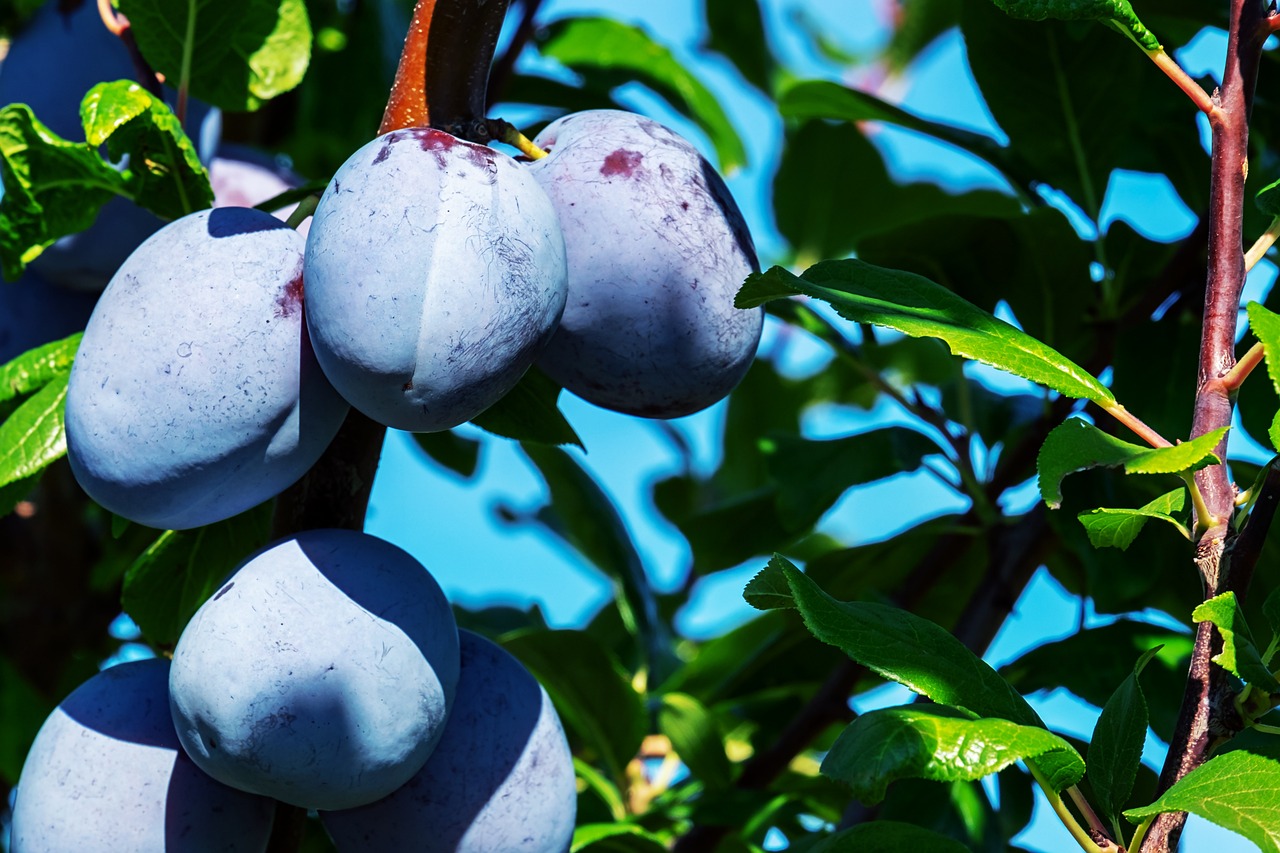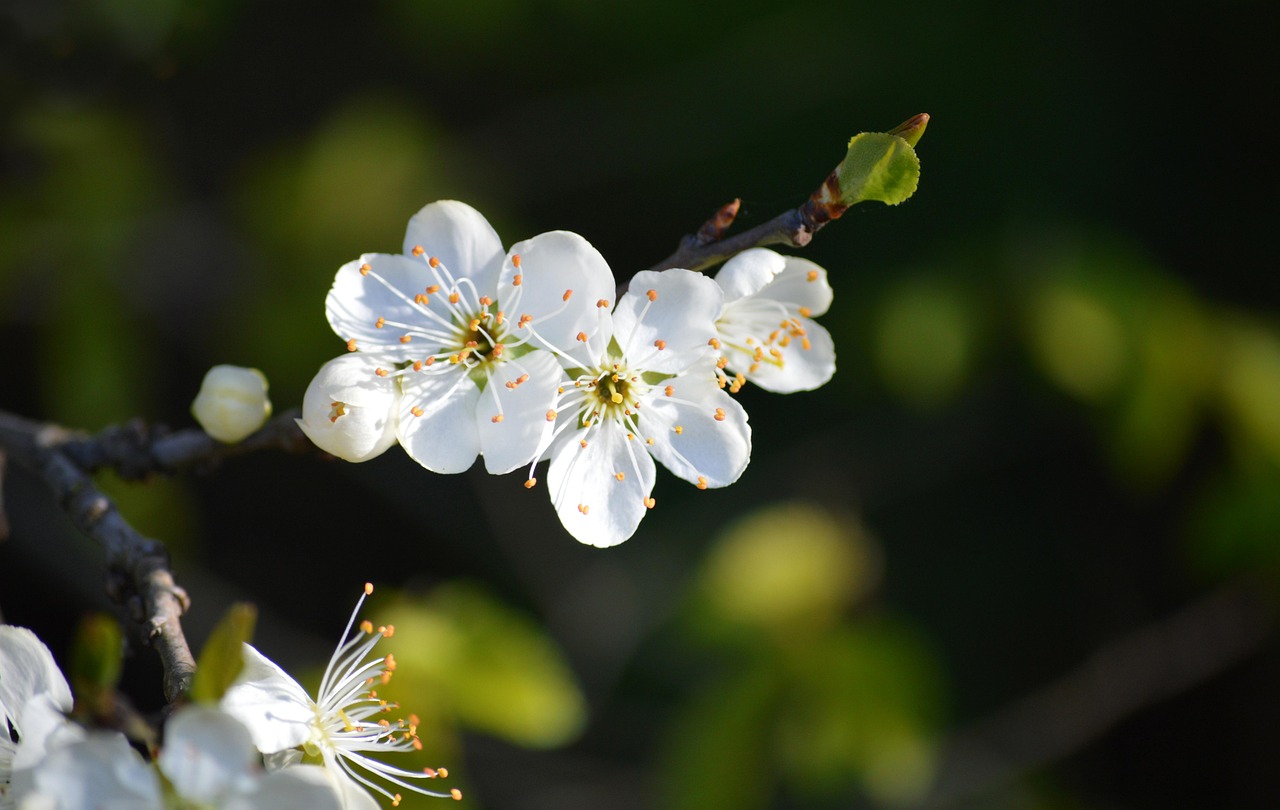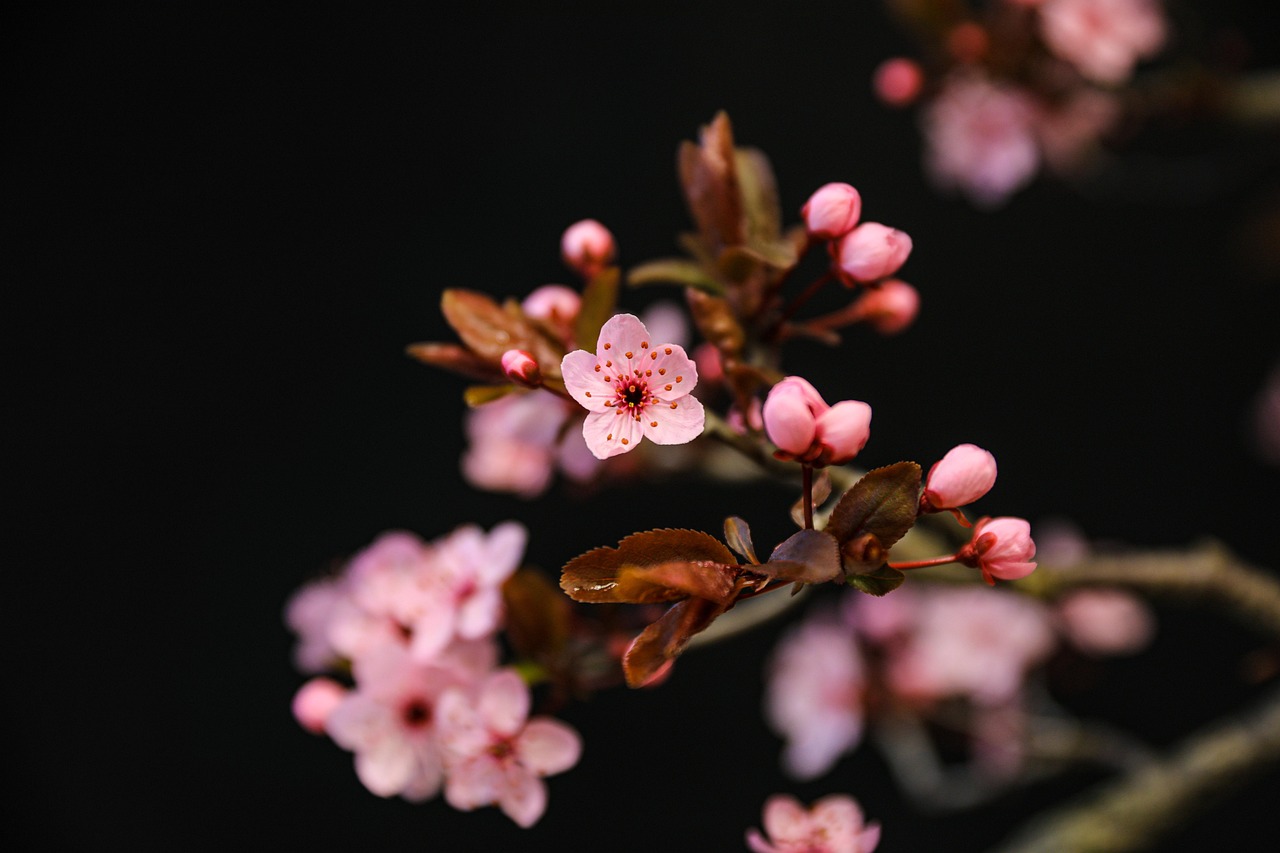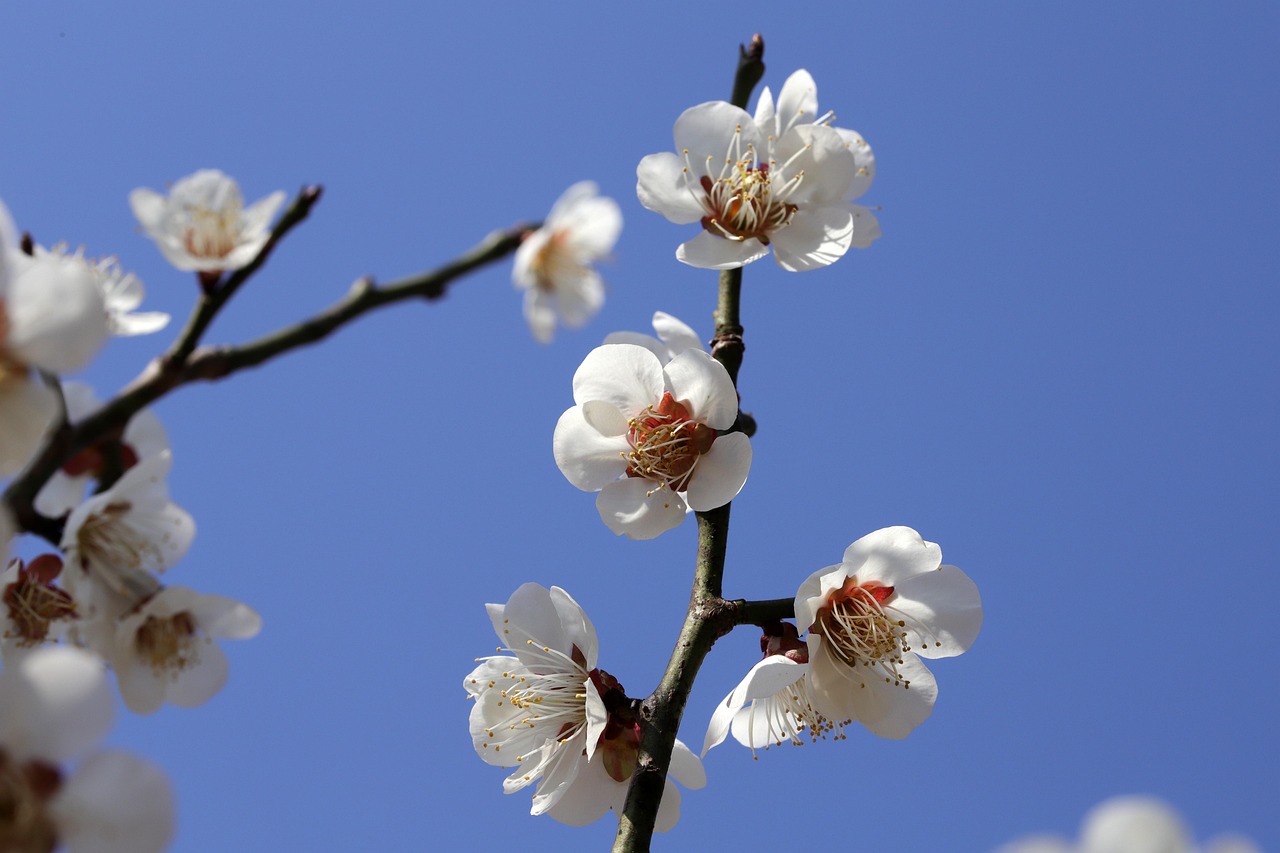Pruning flowering plum trees is essential for promoting vibrant blossoms and maintaining tree health. Proper techniques enhance flower production, improve air circulation, and prevent disease. Regular pruning during the right season encourages robust growth and stunning floral displays.
Flowering plum trees, renowned for their stunning springtime blossoms, are a popular choice in landscapes. These trees not only provide aesthetic beauty but also offer shade and habitat for local wildlife. With their eye-catching flowers, they can transform any garden into a vibrant haven. However, to ensure that these trees thrive and produce abundant blooms, regular pruning is necessary.

Pruning is a vital horticultural practice that involves selectively removing certain parts of a tree, such as branches or buds. When done correctly, pruning can lead to healthier trees with more vivid blossoms. It helps in shaping the tree, which can enhance its visual appeal and overall structure. Moreover, pruning allows for better sunlight penetration and air circulation, reducing the risk of fungal diseases.
Understanding Flowering Plum Trees
Before diving into pruning techniques, it is essential to understand the characteristics of flowering plum trees. These deciduous trees belong to the genus Prunus and are known for their beautiful pink or white flowers that bloom in early spring. They typically grow to a height of 15 to 25 feet, making them suitable for various garden sizes.
| Characteristic | Description |
|---|---|
| Height | 15 to 25 feet |
| Flower Color | Pink or White |
| Bloom Time | Early Spring |
| Fruit | Small edible plums (varies by cultivar) |
| Growing Zones | Zones 5 to 9 |
Flowering plum trees are relatively low-maintenance yet can benefit significantly from proper care, especially pruning. They thrive in well-drained soil and full sunlight. Understanding their growth patterns is key to effective pruning.

Benefits of Pruning Flowering Plum Trees
The benefits of pruning flowering plum trees extend beyond aesthetics. Regular pruning helps promote a healthier tree structure, which can lead to more vibrant blossoms. Below are some key benefits:
- Enhances Flower Production: Pruning stimulates new growth, leading to an increase in the number of flowers.
- Improves Air Circulation: Removing crowded branches helps air flow through the tree, reducing disease risk.
- Removes Dead or Diseased Wood: Pruning eliminates damaged branches that can harbor pests or diseases.
- Shapes the Tree: Regular pruning helps maintain the desired shape and size of the tree.
- Encourages Stronger Growth: Cutting back weak branches redirects energy to stronger shoots.
By understanding these benefits, gardeners can appreciate the importance of incorporating proper pruning techniques into their care routine for flowering plum trees. Timing is also crucial when it comes to pruning.
When to Prune Flowering Plum Trees
The best time to prune flowering plum trees is during late winter or early spring before new growth begins. This timing ensures that the tree can heal quickly and that energy is directed toward new blooms rather than healing cuts made during dormancy.

Pruning too late in the season can remove flower buds that have already formed, leading to fewer blossoms in spring. On the other hand, pruning in the fall may expose fresh cuts to winter diseases and pests, which can harm the tree.
The Right Tools for Pruning
Using the right tools is essential for effective pruning. Having sharp and clean tools minimizes damage to the tree and promotes faster healing. Here are some essential tools for pruning flowering plum trees:
- Hand Pruners: Ideal for cutting small branches and stems.
- Loppers: Useful for thicker branches that are too large for hand pruners.
- Saws: A small pruning saw is necessary for cutting larger branches.
- Gloves: Protect your hands from sharp tools and thorny branches.
- Pole Pruners: Helpful for reaching higher branches without a ladder.
Caring for your tools by cleaning and sharpening them before each use will ensure effective cuts and promote tree health. With the right timing and tools in place, you are ready to learn about specific pruning techniques that will enhance your flowering plum tree’s beauty and vitality.

Pruning Techniques for Flowering Plum Trees
Understanding the right pruning techniques is essential for maintaining the health and beauty of flowering plum trees. There are various methods that can be applied, depending on the age and condition of the tree, as well as the desired outcome. Here are some common techniques used in pruning flowering plum trees:
Crown Thinning
Crown thinning involves selectively removing branches throughout the tree’s crown. This technique enhances light penetration and air circulation, which promotes healthy growth. It also helps prevent overcrowding, allowing the remaining branches to develop fully.
- Benefits of Crown Thinning:
- Increases sunlight exposure to inner branches.
- Reduces the risk of disease by improving air flow.
- Encourages more vigorous growth of remaining branches.
Crown Raising
Crown raising is the process of removing lower branches from the tree. This technique is useful for increasing clearance, allowing for better visibility and access underneath the tree. It is especially beneficial in landscapes where foot traffic or vehicle movement is necessary.
- When to Use Crown Raising:
- When the tree obstructs pathways or roads.
- To enhance the visual appearance of the tree.
- If lower branches are damaged or diseased.
Crown Reduction
Crown reduction involves shortening the overall height or spread of the tree. This technique is often used for mature trees that have outgrown their space or become too large for their location. It helps maintain tree health while keeping it within desired dimensions.
- Steps for Crown Reduction:
- Identify branches that can be safely shortened.
- Make cuts at natural junctions to promote healing.
- Avoid removing more than 25% of the tree’s crown at once.
How to Prune Flowering Plum Trees
To effectively prune flowering plum trees, follow these steps to ensure a successful outcome:
- Assess the Tree: Begin by evaluating the overall health and shape of the tree. Look for any dead, damaged, or crossing branches that need attention.
- Remove Dead or Diseased Wood: Start pruning by cutting away any dead, diseased, or damaged branches. This helps prevent the spread of diseases and pests.
- Thin Out Crowded Branches: Selectively remove branches that are too close together. Focus on those that cross over each other, as they can rub against one another and cause wounds.
- Cut Back Long Branches: Trim back long, leggy branches to promote bushier growth. Make cuts just above a bud or lateral branch to encourage new growth in that direction.
- Maintain Shape: Regularly step back and view the tree from different angles. Ensure it has a balanced and attractive shape as you prune.
- Clean Up: After pruning, gather all cuttings and debris. Dispose of them properly to prevent potential pests and diseases from lingering near the tree.
Common Mistakes to Avoid When Pruning
While pruning is beneficial, there are common mistakes that can harm flowering plum trees if not avoided. Here are some pitfalls to be mindful of:
- Pruning at the Wrong Time: Avoid pruning during late fall or winter when trees are dormant, as this can lead to damage from frost.
- Over-Pruning: Be cautious not to remove more than 25% of a tree’s foliage in one season, as this can stress the tree.
- Poor Cuts: Making improper cuts can lead to tearing of bark and slow healing. Always cut at the correct angles and locations.
- Lack of Cleaning Tools: Not cleaning tools between cuts can spread diseases from one part of the tree to another.
- Ineffective Shaping: Failing to maintain a balanced shape can lead to uneven growth and aesthetic issues.
By avoiding these common mistakes and applying effective pruning techniques, gardeners can ensure their flowering plum trees remain healthy and produce vibrant blossoms year after year. Regular monitoring and care will help maintain the beauty of these stunning trees, providing enjoyment in gardens and landscapes alike.
Pest and Disease Management for Flowering Plum Trees
Maintaining the health of flowering plum trees goes beyond pruning. Pests and diseases can threaten their vitality and beauty. Identifying and managing these issues is crucial for promoting vibrant blossoms. This section will cover common pests and diseases, as well as effective management strategies.
Common Pests Affecting Flowering Plum Trees
Flowering plum trees can be susceptible to several pests. Recognizing these pests early can help prevent significant damage. Here are some common pests to watch for:
- Plum Curculio: This small beetle lays eggs in the fruit, causing it to drop prematurely. Infested fruit may have crescent-shaped scars.
- Scale Insects: These pests appear as small, waxy bumps on branches. They suck sap from the tree, weakening it over time.
- Aphids: Small, soft-bodied insects that cluster on new growth. They can cause leaf curling and may transmit diseases.
- Spider Mites: Tiny pests that thrive in hot, dry conditions. They create fine webbing on leaves and can lead to leaf discoloration.
Disease Issues for Flowering Plum Trees
In addition to pests, flowering plum trees may face various diseases that can impact their health. Here are some common diseases:
- Brown Rot: This fungal disease affects blossoms and fruit, causing them to rot. It thrives in warm, moist conditions.
- Cytospora Canker: A fungal infection that causes sunken, discolored areas on branches. It typically occurs in stressed trees.
- Powdery Mildew: A fungal disease that appears as a white powdery coating on leaves. It thrives in warm, dry weather.
- Fire Blight: A bacterial disease that causes blossoms to wilt and turn brown. It can spread rapidly during warm, wet conditions.
Pest and Disease Management Strategies
Effective management of pests and diseases involves a combination of preventive measures and treatment options. Below are some strategies for keeping flowering plum trees healthy:
Preventive Measures
Taking proactive steps can reduce the risk of pest infestations and disease outbreaks:
- Regular Inspections: Frequently check your trees for signs of pests or diseases. Early detection is key to effective management.
- Proper Pruning: Maintain good air circulation and remove any dead or diseased wood to minimize disease risk.
- Healthy Soil: Ensure your tree is planted in well-drained, nutrient-rich soil to promote overall health and resilience.
- Watering Practices: Water deeply but infrequently to encourage strong root systems. Avoid overhead watering to reduce humidity around the foliage.
Treatment Options
If pests or diseases are detected, there are several treatment options available:
- Pesticides: Use insecticidal soaps or horticultural oils to control soft-bodied insects like aphids and spider mites. Always follow label instructions carefully.
- Fungicides: For fungal diseases like brown rot and powdery mildew, apply fungicides at the first sign of infection. Preventive applications in spring can also be effective.
- Biological Control: Introduce beneficial insects like ladybugs that can help control aphid populations naturally.
- Cultural Practices: Remove fallen fruit and debris around the tree to reduce the risk of disease spread and pest attraction.
When to Seek Professional Help
If you notice severe infestations or persistent disease issues that do not improve with home treatment methods, it may be time to consult a professional arborist or tree care service. They can provide specialized advice and treatment options tailored to your specific situation.
The Importance of Fertilization
Alongside pruning and pest management, fertilization plays a vital role in the health of flowering plum trees. Proper fertilization supports robust growth and enhances the tree’s ability to withstand stress from pests and diseases.
Choosing the Right Fertilizer
Selecting an appropriate fertilizer is critical for flowering plum trees. Here are some guidelines:
- Nitrogen-Rich Fertilizers: These promote leafy growth but should be balanced with other nutrients. Look for a fertilizer with a nitrogen-phosphorus-potassium (N-P-K) ratio suitable for flowering trees.
- Slow-Release Formulas: Using slow-release fertilizers provides a steady supply of nutrients over time, reducing the risk of over-fertilization.
- Organic Options: Consider organic fertilizers such as compost or well-rotted manure. They improve soil structure while supplying nutrients.
Fertilization Timing
The best time to fertilize flowering plum trees is in early spring, just before new growth begins. This timing ensures that the tree has access to nutrients during its active growing season.
You can perform a soil test to determine nutrient levels in your soil before applying fertilizer. This ensures that you are meeting the specific needs of your flowering plum tree without over-fertilizing, which can lead to excessive foliage growth at the expense of blossoms.
By combining effective pruning techniques with proper pest management, disease prevention, and fertilization practices, you can ensure that your flowering plum trees remain healthy and produce vibrant blossoms year after year.
Additional Care Tips for Flowering Plum Trees
To maximize the beauty and health of flowering plum trees, additional care tips can be beneficial. Beyond pruning, pest management, and fertilization, certain practices can enhance the overall growing conditions and appearance of these trees.
Mulching
Applying mulch around the base of flowering plum trees offers several advantages, including:
- Moisture Retention: Mulch helps retain soil moisture, reducing the need for frequent watering.
- Weed Suppression: A layer of mulch can prevent weeds from competing with the tree for nutrients and water.
- Temperature Regulation: Mulch insulates the soil, keeping it cooler in summer and warmer in winter.
When applying mulch, use organic materials such as wood chips, straw, or shredded bark. Spread a layer 2-4 inches thick, leaving space around the trunk to prevent rot.
Watering Practices
Proper watering is crucial for flowering plum trees, especially during dry spells. Here are some guidelines:
- Deep Watering: Water deeply once a week rather than lightly every day. This encourages deep root growth.
- Avoid Overwatering: Ensure that the soil drains well to prevent root rot. Check the soil moisture before watering.
- Adjust for Seasons: Watering needs may change with the seasons. Increase watering during hot months and reduce during cool, rainy periods.
Seasonal Monitoring
Regularly monitor flowering plum trees through the seasons. This practice includes:
- Spring: Look for signs of new growth and blooms. Inspect for pests as leaves emerge.
- Summer: Check for proper watering and monitor for pest infestations or disease symptoms.
- Fall: Prepare the tree for winter by applying mulch and ensuring it has adequate moisture before dormancy.
- Winter: Inspect for any damage from snow or ice. Avoid heavy pruning during this season.
Choosing the Right Location
The location of flowering plum trees significantly influences their growth and flowering potential. Consider the following factors when planting:
- Sunlight: Flowering plum trees thrive in full sun. Choose a location with at least 6 hours of direct sunlight daily.
- Soil Type: Well-drained, loamy soil is ideal. Avoid areas with heavy clay or poorly drained soils.
- Space Considerations: Ensure enough space for the tree to grow without crowding nearby plants. This allows for air circulation and sunlight exposure.
Cultivar Selection
Selecting the right cultivar of flowering plum tree is crucial for achieving desired results in your landscape. Some popular cultivars include:
| Cultivar | Description |
|---|---|
| Prunus cerasifera ‘Thundercloud’ | A popular cultivar known for its purple foliage and pink flowers. |
| Prunus x blireiana | This variety features fragrant pink flowers and a compact growth habit. |
| Prunus cerasifera ‘Krauter Vesuvius’ | A cultivar with dark maroon foliage and vibrant pink blossoms. |
| Prunus ‘Burgundy’ | This tree produces stunning pink flowers along with dark burgundy leaves. |
Selecting a cultivar that suits your climate, space, and aesthetic preferences will contribute to a successful growing experience.
Final Thoughts
Caring for flowering plum trees involves a combination of techniques to ensure vibrant blossoms and overall health. Pruning at the right time and using proper techniques can enhance flower production while preventing disease and pest issues. Additionally, effective pest management, along with thoughtful fertilization and watering practices, play significant roles in maintaining tree vitality.
Implementing these care strategies will not only promote stunning blooms but also contribute to the longevity of your flowering plum trees. By selecting the right location, cultivar, and care practices, you can enjoy these beautiful trees in your landscape for many years to come. With proper attention and care, flowering plum trees will reward you with their breathtaking beauty each spring.
